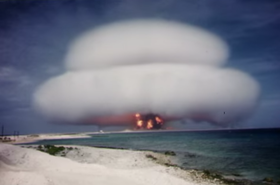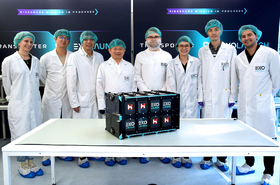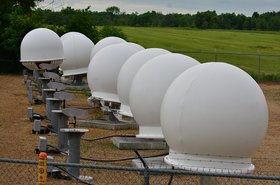Russia destroyed one of its defunct Soviet-era satellites in an anti-satellite (ASAT) weapon test on November 15, resulting in thousands of pieces of debris in Lower Earth Orbit (LEO). The missile that was launched from Russia destroyed Cosmos-1408, which had been orbiting Earth for almost 40 years.
This action threatened the safety of astronauts aboard the International Space Station. The crew sheltered in Soyuz and Dragon capsules that could get them to safety in the face of a potential collision. The debris cloud is orbiting at a rate of 17,000 miles per hour, 10 times faster than a bullet, right above the orbit of the International Space Station (ISS). Astronauts aboard China’s Tiangong space station are also at risk.
This is a threat to all nations and to a sustainable commercial space ecosystem. The debris generated from this event will remain in orbit for decades threatening the safety of satellites in LEO. Russia’s actions were dangerous, irresponsible and antithetical to what the international community should be doing to ensure a sustainable infrastructure for the growing commercial space industries.
Space debris is a dangerous problem
It’s estimated that one million pieces of space debris, inoperative objects in space and fragments of past collision events and breakups, are currently orbiting Earth. According to McKinsey, “we’re at the point where about 70,000 satellites could enter orbit if proposed plans come to fruition—an explosion of interest based on potential new markets, innovative architectures, and more sophisticated technologies.”
Space debris has caused prior problems for other satellites, like when a piece of debris that was too small to track punched a hole in the ISS Canadian Space Agency’s robotic arm, Canadarm2, in May 2021. A Chinese satellite, Yunhai 1-02, was hit by pieces of a Russian spacecraft a couple months earlier. The debris makes it more of a challenge to conduct safe space operations in the LEO environment. Many of them are from prior missile tests, and include non-functional spacecraft, abandoned vehicles, and fragmented pieces of debris from broken parts or launch vehicles.
What happens in orbit, stays in orbit
Collisions with space debris in LEO remain a concern across the space industry. Moving at about 5 miles per second, even a small fragment carries a significant amount of energy. As the space junk problem continues to grow, debris will increasingly threaten the safety of satellites and astronauts in space.
According to NASA, “Debris left in orbits below 370 miles (600 km) normally fall back to Earth within several years. At altitudes of 500 miles (800 km), the time for orbital decay is often measured in decades. Above 620 miles (1,000 km), orbital debris normally will continue circling Earth for a century or more.”
Fragments generated as a result of an explosive collision, such as an ASAT test, could reach higher altitudes than the original orbit of the parent satellite due to the additional energy created by the explosion, or because of the significant change in the shape of the orbits of the resulting fragments making them highly eccentric. Hence, the fragments generated from a catastrophic event in orbit can threaten satellites that orbit at a higher altitude than where the event took place, as well as those that are in lower altitudes. This Russian ASAT test is particularly concerning since it occurred at an altitude range where many commercial satellites and mega-constellations are operating.
Solving the space junk problem
Commercial industries and governments alike are planning to launch more than 100,000 satellites into space over the next decade, increasing the congestion in LEO. Operators are not able to maintain pace with the growing congestion risk based on their existing processes, which are manual and prone to delays and errors, which puts everyone at risk.
At Kayhan Space, we are building technologies that support satellite operators in avoiding collisions, including a platform with autonomous astrodynamics capabilities that remove human error and delays in responses. Satellite operators need access to timely, optimal, and reliable solutions, along with high-performance spaceflight safety software that is built on accurate data and responses..





